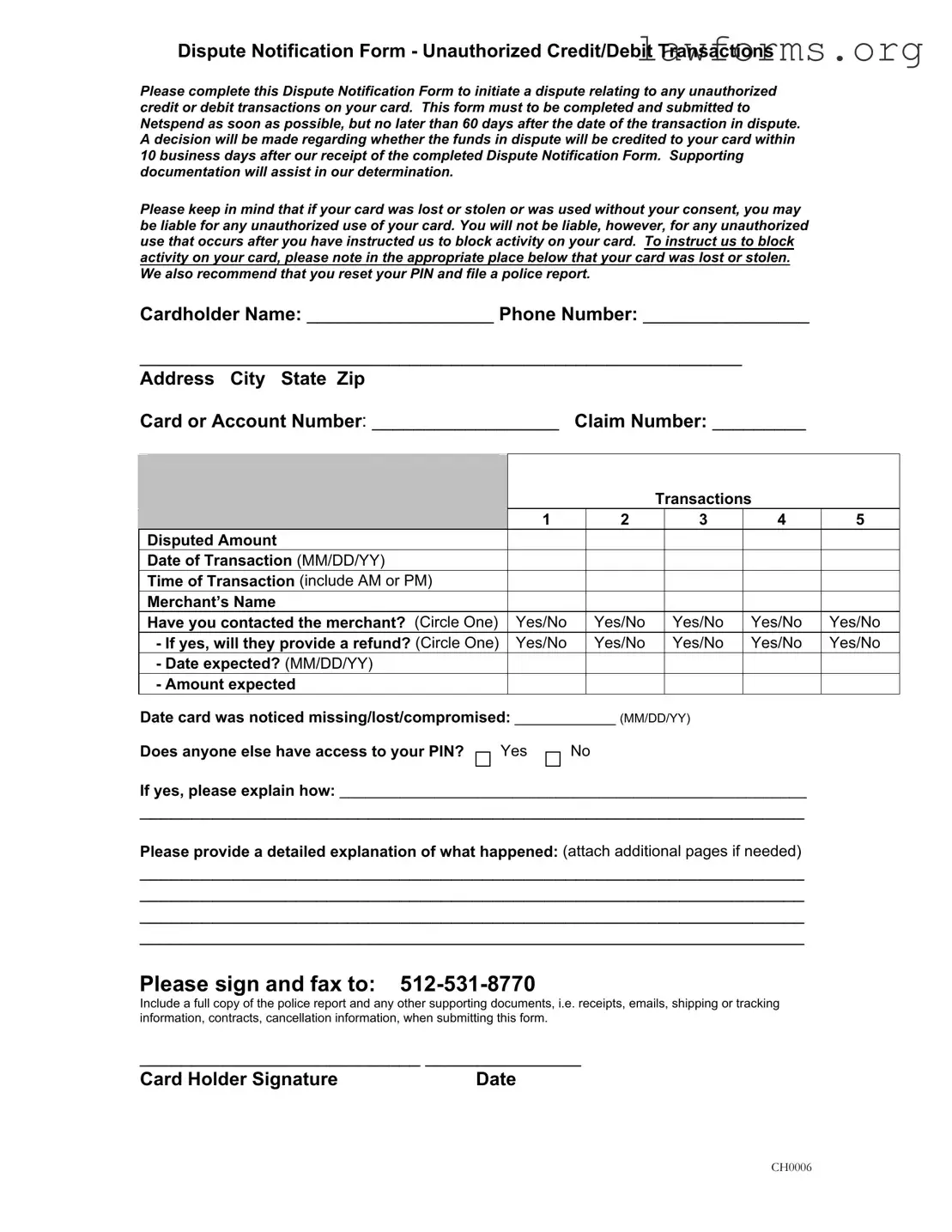
Dispute Notification Form - Unauthorized Credit/Debit Transactions
Please complete this Dispute Notification Form to initiate a dispute relating to any unauthorized credit or debit transactions on your card. This form must to be completed and submitted to Netspend as soon as possible, but no later than 60 days after the date of the transaction in dispute. A decision will be made regarding whether the funds in dispute will be credited to your card within 10 business days after our receipt of the completed Dispute Notification Form. Supporting documentation will assist in our determination.
Please keep in mind that if your card was lost or stolen or was used without your consent, you may be liable for any unauthorized use of your card. You will not be liable, however, for any unauthorized use that occurs after you have instructed us to block activity on your card. To instruct us to block activity on your card, please note in the appropriate place below that your card was lost or stolen. We also recommend that you reset your PIN and file a police report.
Cardholder Name: __________________ Phone Number: ________________ |
|
__________________________________________________________ |
|
|
Address City State Zip |
|
|
|
|
|
|
|
Card or Account Number: __________________ |
Claim Number: _________ |
|
|
|
|
|
|
|
|
|
|
|
|
Please provide information for each |
|
|
|
|
|
|
|
|
|
transaction you are disputing (submit up to 5 |
|
|
|
|
|
|
|
|
|
on one form) |
|
|
|
|
Transactions |
|
|
|
|
1 |
|
2 |
|
3 |
4 |
5 |
Disputed Amount |
|
|
|
|
|
|
|
Date of Transaction (MM/DD/YY) |
|
|
|
|
|
|
|
Time of Transaction (include AM or PM) |
|
|
|
|
|
|
|
Merchant’s Name |
|
|
|
|
|
|
|
Have you contacted the merchant? (Circle One) |
Yes/No |
|
Yes/No |
|
Yes/No |
Yes/No |
Yes/No |
|
- If yes, will they provide a refund? (Circle One) |
Yes/No |
|
Yes/No |
|
Yes/No |
Yes/No |
Yes/No |
|
- Date expected? (MM/DD/YY) |
|
|
|
|
|
|
|
|
- Amount expected |
|
|
|
|
|
|
|
Date card was noticed missing/lost/compromised: _____________ (MM/DD/YY)
Does anyone else have access to your PIN?
If yes, please explain how: ______________________________________________________
________________________________________________________________
Please provide a detailed explanation of what happened: (attach additional pages if needed)
________________________________________________________________
________________________________________________________________
________________________________________________________________
________________________________________________________________
Please sign and fax to: 512-531-8770
Include a full copy of the police report and any other supporting documents, i.e. receipts, emails, shipping or tracking information, contracts, cancellation information, when submitting this form.
___________________________ _______________
Card Holder Signature |
Date |

